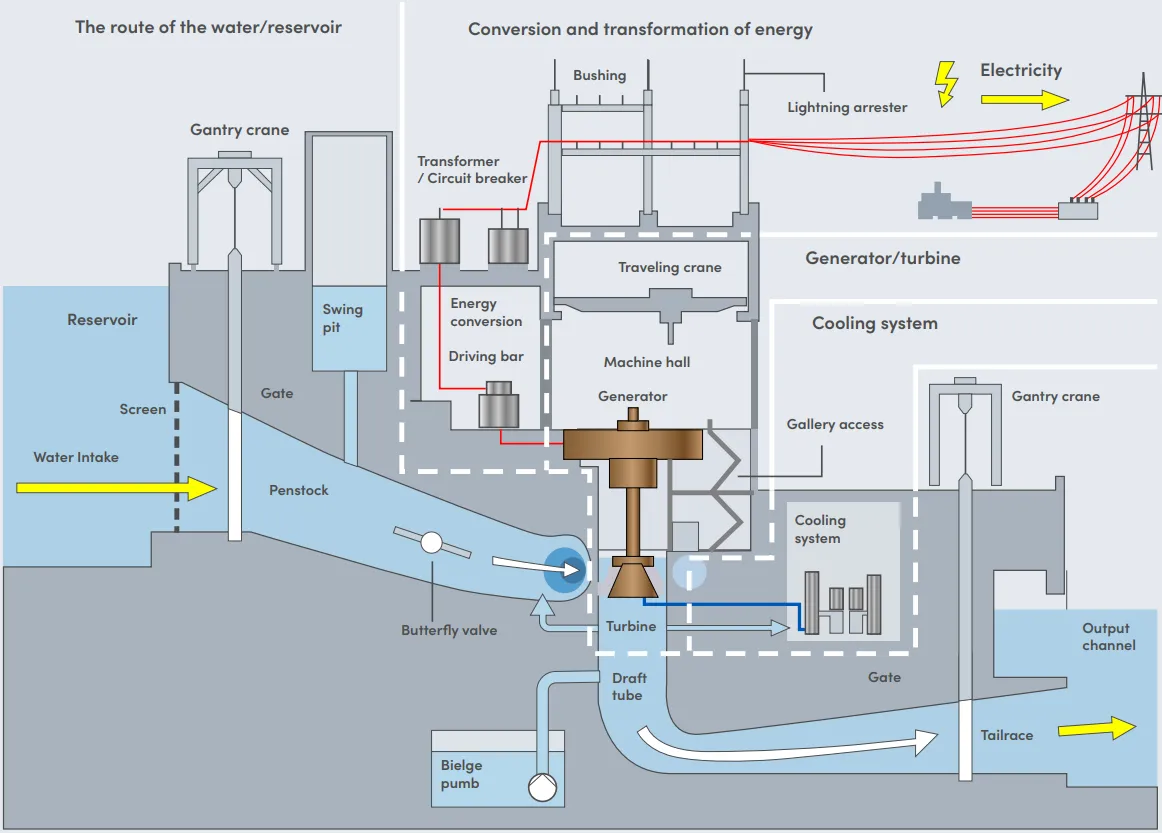Hydroelectric power plant
A hydroelectric power plant is where potential water energy stored in a dam is transformed into kinetic energy needed to move the rotor of a generator and then transformed into electrical energy.
Hydroelectric power plants are built at riverbeds, making a dam to retain water. In order to do that, a wide stone, concrete or other materials wall is built, usually supported by a mountain. Water contained in the dam is conducted through piping to a turbine’s blades which are at the base of the dam, connected to a generator. Thus, water transforms its potential energy into kinetic energy, which then moves the turbine´s blades.

Dam
It is built to keeping water and cause a level rise to create the potencial energy. The water at the bottom of the dam is conducted to the turbine where the potencial energy is transformed in kinetic energy.
Derivation channel
It is a pipe that channels water from the dam, at its origin it has one or several protected water intakes through metallic racks to avoid strange particles.
Pressure chamber
It is a chamber located at the bottom of the dam connected to the water intake designed to avoid abrupt variation of pressure due to water flow fluctuations, it is here at this chamber where the balance chimney is built.
Penstock
Also called forced piping; its function is to conduct water from the pressure chamber to the turbine.
Turbine chamber
Area where turbines and generators are installed.
Powerhouse
Electricity generated is conditioned in the main substation to be transmitted to consuming centers by power lines.
Drain canal
It is where used water by the turbines is then returned to the river.
Hydropower plant

Hydropower plant process flow diagram